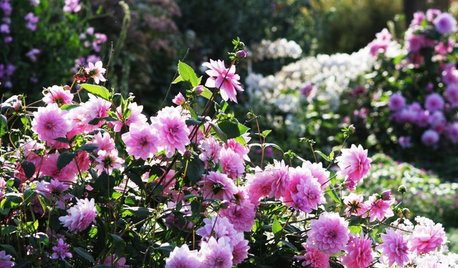rhododendron marjatta hellikki
eric30s
17 years ago
Related Stories

FLOWERS AND PLANTSPink Flowers to Sweeten Your Garden
Show your garden some love with a living bouquet of pink flowers. Here are 20 beauties to choose from
Full StoryThe shrub is in its second year and I used decaying pine needles for fertilizer as well as Plant Prod 30-10-10 water-soluable fertilizer. I didn't see any flowers on the bush. What do you recommend for flower growth on a rhodo? Maybe then I'll see flowers on it in its third year.

mainegrower
eric30sOriginal Author
Related Professionals
South Orange Landscape Architects & Landscape Designers · Arlington Landscape Contractors · Middletown Landscape Contractors · Tempe Landscape Contractors · Beachwood Landscape Contractors · Cambridge Landscape Contractors · Danvers Landscape Contractors · Fort Atkinson Landscape Contractors · Gresham Landscape Contractors · Harvey Landscape Contractors · Hickory Hills Landscape Contractors · Madera Landscape Contractors · Middle River Landscape Contractors · Tyngsboro Landscape Contractors · Vadnais Heights Landscape Contractorsluis_pr
dee_can1
eric30sOriginal Author
luis_pr
luis_pr
eric30sOriginal Author
dee_can1
luis_pr
luis_pr